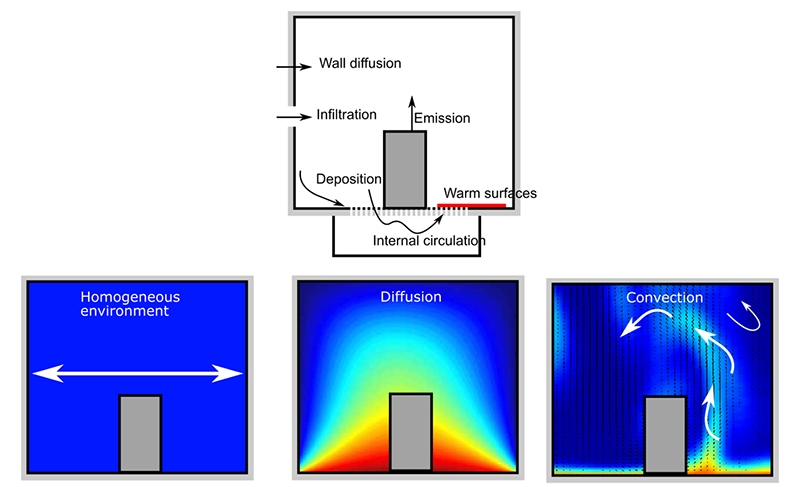Service: Environmental simulation
Platforms
Fixlab
Techniques
No
techniques found

Environmental simulation allows for users to monitor, visualise and model any environment, from sites, to exhibition spaces, to display cases.
Environmental simulation allows for users to monitoring, visualisation and modelling of indoor environments, e.g. temperature and relative humidity as well as modelling of environmental scenarios using software tools such as Ansys, Energy+ or WUFI to understand building behaviour and the impact of climate change. This service can help with:
1. Simulating airflow in museum spaces using Computational Fluid Dynamics (CFD) to predict and optimize ventilation systems, ensuring that temperature and relative humidity levels remain within safe ranges for collections, preventing accelerated deterioration due to uneven air distribution.
2. Modelling the impact of different HVAC (Heating, Ventilation, and Air Conditioning) system designs on indoor microclimates, evaluating how air velocity and humidity variations affect the condition of materials like wood, textiles, and paper, and using CFD tools to test system performance.
3. Using CFD simulations to visualize the movement of pollutants such as dust, VOCs (volatile organic compounds), and other harmful airborne agents within exhibition spaces, identifying high-risk areas where collections could be exposed to damaging contaminants.
4. Conducting dynamic simulations of fluctuating environmental conditions, such as changes in external temperature or humidity due to seasonal transitions, to understand the internal responses of museum buildings and predict potential risks to artifacts.
5. Integrating thermal and moisture transport models in conjunction with CFD simulations to study how temperature gradients and moisture migration in walls, floors, and ceilings influence the development of mold, corrosion, or other deterioration agents, allowing for the proactive management of conservation efforts.
Fields of application
Preventive conservation
Methods
Tools
Other information
-
Input: The input for these simulations includes two main types: monitoring data and geometry. Monitoring data refers to real-time measurements of factors like temperature, humidity, airflow, and pollutant levels, which can be collected at varying levels of detail. Geometry involves the 3D layout of the museum or space, which can range from simple room dimensions to highly detailed models that include every architectural feature, allowing for precise simulations of airflow and environmental conditions. The level of detail can be adjusted based on the complexity of the analysis needed.
-
Output: The outputs include 2D visualizations that display temperature, humidity, or airflow patterns, highlighting potential problem areas. 3D visualizations offer more detailed models. Another common output are scenario comparisons of the operation of different environmental setups or management options.


